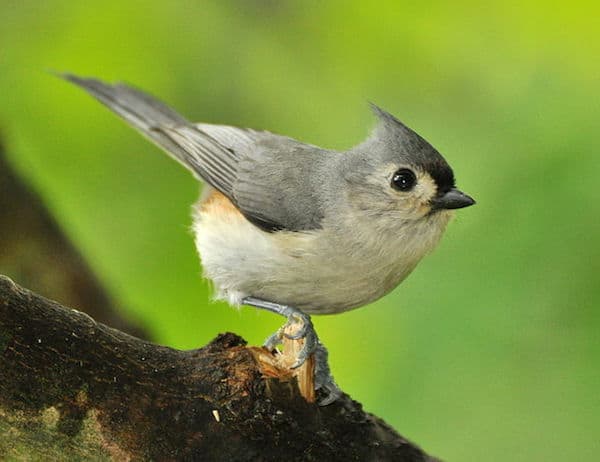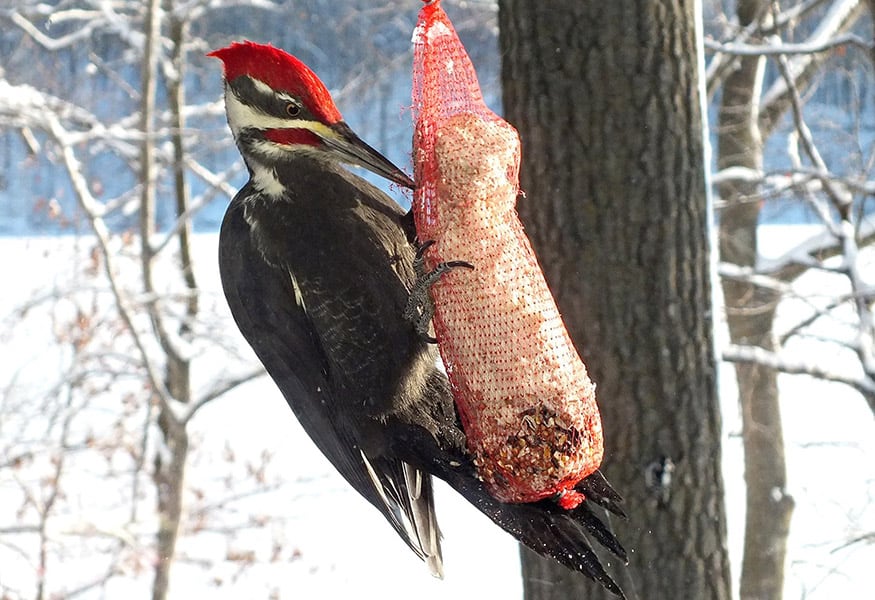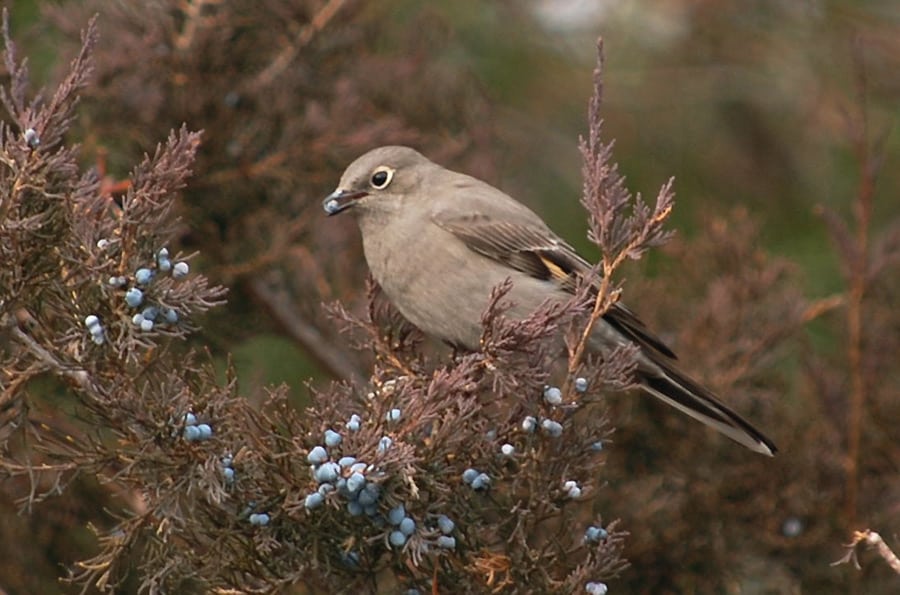Look for
The tufted titmouse is 61/2 inches long and dressed primly across its upperparts in gray, with a creamy breast and rusty flanks. A black-button eye stands out against its white cheek, and a crest adorns its head. Its small, sharp bill is black, as are its legs and feet.
Listen for
Titmice are very vocal and, besides their signature peter calls, they have a variety of whistled notes—similar to those of the cardinal and Carolina wren. Their harsh, raspy, scolding notes are similar to the chickadee’s.
Find it
From deep mixed woods to old orchards, from city parks to leafy suburban backyards, this friendly and active little bird makes itself at home throughout the year. It is noisy and sociable, quite tame in human company, and fearless among other small birds with which it associates.
The tufted titmouse was originally considered a southern woodland bird, but for the past 50 years it has been expanding its range northward. The species’ affinity for bird feeders and nesting boxes has played a part in this expansion. Titmice are non-migratory and able to survive harsh weather if sufficient food is available.
Feed it
Tufted titmice eat mostly insects and seeds, depending on time of year. Caterpillars are a popular item in summer, but they also take wasps and bees, scale insects, beetles, the larvae of many species, and, in winter, insect eggs. Acorns are a mainstay in fall and winter. At feeders, titmice relish sunflower seeds, suet, suet dough, and peanuts.
Nesting Behavior
The natural nesting choice of the tufted titmouse is a tree cavity—an abandoned wood- pecker hole, or crack caused by a lightning strike. Other sites include rotted fenceposts, drainage pipes, and nest boxes.
The female builds the nest of grass, moss, bark, and leaves, filling up whatever size hole they have adopted. When the main structure is completed, the birds line it with hair—often plucked from a living animal—woodchuck, rabbit, dog, or even a handy human.
Five or six eggs are laid, incubated by the female for 12 to 14 days. Both parents feed the young, which fledge at about 15 days. The family group stays together, sometimes into the next year, and year-old birds may help their parents care for the nestlings of the newest brood.
WOW!
Tufted Titmice love to line their nests with soft hair. More than one sleeping family pet (and even some humans) have felt a sudden tug as a titmouse boldly steals a bit of hair.




